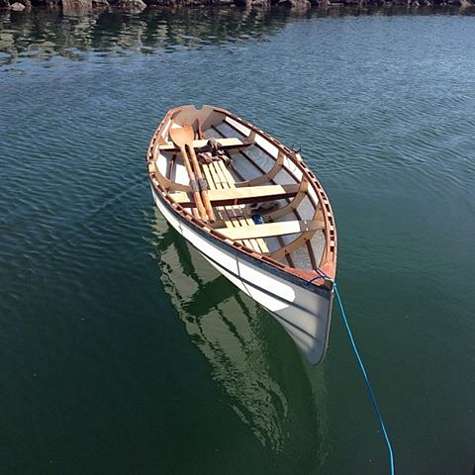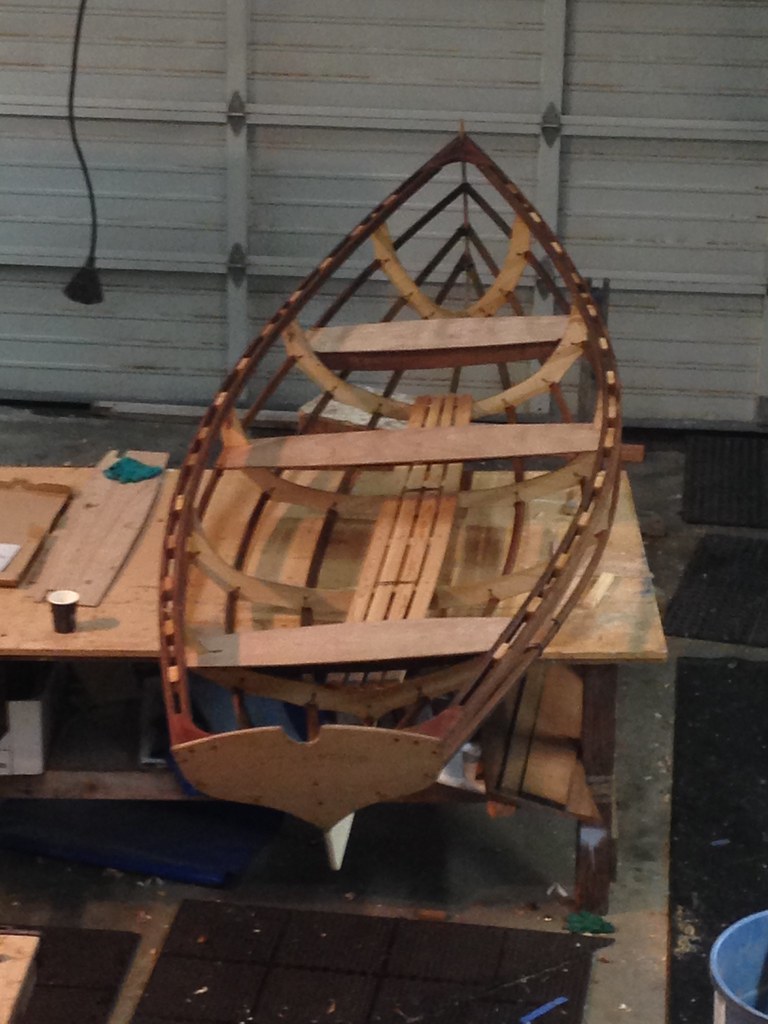Julie Skiff Free Plans
Free plans. To download the file,
click HERE
This boat has been designed by an amateur with no qualifications in boat design or boatbuilding and should be regarded as experimental until several have been built. The designer accepts no liability for any loss or accident that may result from following these instructions or their attendant plans or from any loss or accident that may follow from using the boat.
The
Julie skiff as laid out in these plans is a lightweight stitch and glue flattie skiff that would be a nice rower for one and can carry two at a pinch. The name came from my partner, who took rather a shine to the boat.
She's designed to be easy to build and use, a pleasure to row, easy on the eye, and be dry and comfortable. I've drawn what I consider to be an attractive sheerline, a moderately large transom that should keep out following waves, and a bows intended to lift over oncoming swells.
Another feature designed for comfort is the sunken foredeck, which drains back into the water and not into the boat. It's intended to provide a convenient space to put potentially wet and mucky things such as a painter or a small anchor and rode, and will also redirect splashes back into the water. If anyone wishes to sit at the front of this little boat, they'll have to sit on the bottom, but I don't think that will be any great loss, as the boat will be much more stable this way.
On the lines, I have to say that I've never known a small boat design that defined itself as this one did. In fact, within the confines of the beam, length and displacement there weren't too many options for making a new flattie skiff that was radically different or better than many of the existing designs. Nevertheless, the
Julie skiff is all my own work and does not share her lines or construction with any other existing skiff design that I know about. Any similarities with other boats that may be found by others are purely coincidental.
My approach has been to make the forward lines fairly straight, while making those aft more curvy in order to place the centre of bouyancy in the conventional place, a little aft of the half way mark. This approach seems to have worked well with another design of mine, the Light Trow, which is another light-displacement flattie design of about this size and is reported to row very well.
I've also varied the flare - the angle between the sides of the boat and its bottom - throughout the length of the boat. In the forward quarter of the boat flare has been used to create a shape that will turn back small waves, while at the centre of the boat it is reduced in order to work in the necessary displacement.
Further aft, however, it has been allowed to increase again in an attempt to reduce the potential for the hard chine to create eddies, and also to ensure that the stern has plenty of bouyancy when the user wishes to transport something heavy - or someone - in the stern.
15ft 6in length overall by 4ft beam
450lbs displacement
33.5sq ft wetted area
designed for stitch and glue construction using 4-6mm 4ft by 8ft plywood










